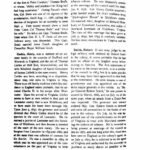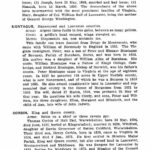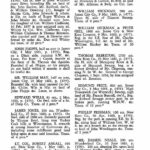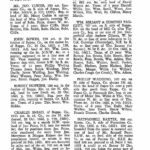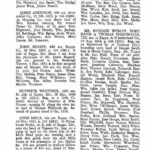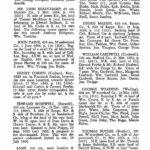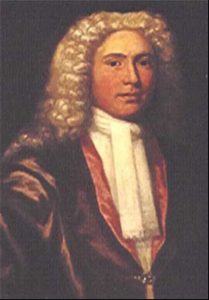
Henry Corbin
Date of Birth
January 1629
Place of Birth
Hall End, Warwickshire, England
Towns / Cities Moved Into
Lancaster, Virginia, British Colonial America in 1654
Known Occupation
Planter,
Agent, Member of the House of Burgesses for Lancaster County,
Member of the Virginia Governor's Council
Religion
-
Spouse
Alice Eltonhead
Death Information
Year of death
8 January 1675
Place of death
Middlesex, Virginia, British Colonial Americ
Cause of death
Insert reason for death
Burial location
Buckingham House Cemetery, Urbanna, Middlesex, Virginia, United States
Obituary
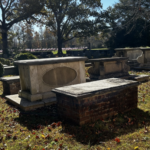
Parents

Thomas Cobin

Winifred Grosvenor
Marital Status


Married Alice Eltonhead
July 25, 1656
Middlesex, Virginia.
Siblings





Children








Narrative / Story
Henry Corbin’s life, spanning from 1629 to 1675, is a tale woven into the fabric of early American colonial history. Born in Hall End, Warwickshire, England, Henry was the third child of Sir Thomas Corbin and Winifred Grosvenor. His early years in England were overshadowed by the tumultuous period of the English Civil War, which began in 1642. This conflict, pitting royalists against parliamentarians, would have undoubtedly impacted the Corbin family, shaping Henry’s early worldview.
In 1654, at the age of 25, Henry embarked on a significant journey, leaving England to settle in Lancaster, Virginia, in British Colonial America. This move came at a time when the New World was a tapestry of European powers vying for control, with the Dutch, Swedes, and English establishing colonies. Henry’s arrival in Virginia coincided with a period of relative instability and change in the region, including the Dutch surrender of New Sweden to New Netherland in 1655 and the subsequent British annexation of New Netherland in 1664.
Henry’s life in Virginia was marked by his roles as a planter, agent, and politician. He married Alice Eltonhead in 1656, with whom he had eight children: Laetitia Vivia, Thomas, Alice, Winifred, Ann, Frances, Henry, and Col. Gawin Corbin, Sr. His marriage to Alice, a widow of a burgess, connected him to influential families in Maryland and Virginia. Henry’s career flourished as he served in both houses of the Virginia General Assembly and was appointed to the Virginia Governor’s Council in 1663. His involvement in tobacco plantations, which employed enslaved labor, was a testament to the socio-economic dynamics of the time, where slavery was an integral part of the colonial economy.
The creation of Middlesex County from Lancaster County, a process in which Henry played a significant role, was a notable achievement in his political career. His life as a merchant and planter would have been demanding, involving management of land, labor, and the complexities of colonial trade. The socio-economic landscape of Virginia during this period was shaped by the labor of enslaved Africans, and as a plantation owner, Henry would have been directly involved in this system.
Henry’s life was not without personal tragedy. His death on January 8, 1675, in Middlesex, Virginia, marked the end of a life deeply intertwined with the early history of colonial America. He was buried at Buckingham House Cemetery in Urbanna, Middlesex, Virginia, leaving behind a legacy as a prominent figure in the development of Virginia.
Henry Corbin’s story is a reflection of the broader historical and socio-economic context of 17th-century colonial America. His life, marked by migration, political involvement, and plantation ownership, offers a window into the complexities and challenges of life in early Virginia. His narrative is a testament to the resilience and adaptability of those who played a part in shaping the early American colonial landscape.
